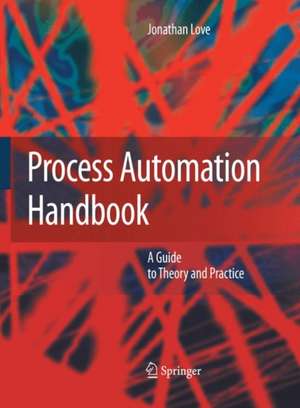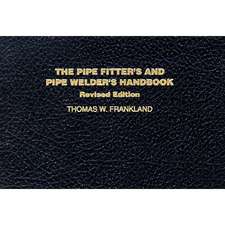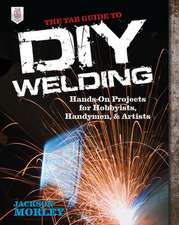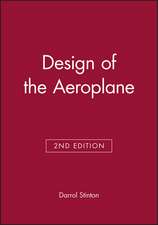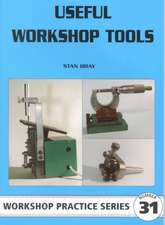Process Automation Handbook: A Guide to Theory and Practice
Autor Jonathan Loveen Limba Engleză Paperback – 23 aug 2016
| Toate formatele și edițiile | Preț | Express |
|---|---|---|
| Paperback (1) | 1755.13 lei 38-45 zile | |
| SPRINGER LONDON – 23 aug 2016 | 1755.13 lei 38-45 zile | |
| Hardback (1) | 2411.79 lei 38-45 zile | |
| SPRINGER LONDON – 23 aug 2007 | 2411.79 lei 38-45 zile |
Preț: 1755.13 lei
Preț vechi: 2279.38 lei
-23% Nou
Puncte Express: 2633
Preț estimativ în valută:
335.88€ • 350.22$ • 279.15£
335.88€ • 350.22$ • 279.15£
Carte tipărită la comandă
Livrare economică 17-24 martie
Preluare comenzi: 021 569.72.76
Specificații
ISBN-13: 9781447168195
ISBN-10: 1447168194
Pagini: 1093
Ilustrații: XLVIII, 1093 p.
Dimensiuni: 193 x 260 x 64 mm
Greutate: 2.76 kg
Ediția:Softcover reprint of the original 1st ed. 2007
Editura: SPRINGER LONDON
Colecția Springer
Locul publicării:London, United Kingdom
ISBN-10: 1447168194
Pagini: 1093
Ilustrații: XLVIII, 1093 p.
Dimensiuni: 193 x 260 x 64 mm
Greutate: 2.76 kg
Ediția:Softcover reprint of the original 1st ed. 2007
Editura: SPRINGER LONDON
Colecția Springer
Locul publicării:London, United Kingdom
Descriere
Preface. .......................................... ................................ xi Acknowledgements . ............................. ................................ xv Biography ....................................... ................................ xix Contents . ........................................ ................................ xxi Part I: Technology and Practice 1Introduction .............................. ................................ 3 2 Instrumentation .......................... ................................ 55 3 Final Control Elements ................... ................................ 123 4 Conventional Control Strategies .......... ................................ 147 5 Process Control Schemes ................. ................................ 207 6 Digital Control Systems ................... ................................ 277 7 Control Technology . ...................... ................................ 377 8 Management of Automation Projects ..... ................................ 463 Part II: Theory and Technique 9 Maths and Control Theory . ............... ................................ 565 10 Plant and Process Dynamics .............. ................................ 699 11 Simulation ................................ ................................ 771 12 Advanced Process Automation ........... ................................ 803 13 Advanced Process Control ................ ................................ 963 Bibliography .................................... ................................ 1047 Abbreviations and Acronyms ................... ................................ 1055 Index . ........................................... ................................ 1065 Foreword The process industries are subject to increasing changes. These include globali- tion, increased earning per share expectation, increasing safety and environmental legislation, staff retirement, shortage of engineers and increasingly rapid evolution of technology. To be successful, process manufacturing companies must respond by: Consistently improving safety and environmental performance Becoming more responsive to customers Reducing manufacturing costs Reducing working capital Improving equipment life There are many approaches to achieving these improvements such as improvement of process equipment and ?owsheets, staff training, work process improvement, organizational restructuring and, in particular, process automation.
Cuprins
Chapters are organised into the following sections:Part I: Technology and PracticeIntroductionInstrumentationControl Loop ElementsConventional Control StrategiesProcess Control SchemesDigital Control SystemsControl TechnologyManagement of Automation ProjectsPart II: Theory and TechniqueControl TheoryPlant and Process DynamicsSimulationAdvanced Process AutomationAdvanced Process ControlReferencesAcronymsIndex
Recenzii
From the reviews:
"Jonathan Love's tour-de-force single volume Process Automation Handbook is a necessary reference, right beside Liptak's Instrument Engineer's Handbook, and if I can be pardoned, my own Instrumentation Reference Book, that should be on every process automation professional's desk or bookshelf.
"In the other two works, Liptak and I concentrate on the automation components, systems and devices that make automation work, while Love concentrates on the processes and systems that those devices make up.
"This book cannot be rated too highly. Dr. Love is a remarkably good writer, too, and his book is anything but dry and scholarly. Scholarship is there, yes, and exceptionally good, too, but the book is written in an extremely accessible voice.
"Since we are seeing people entering the profession who haven't any experience and don't have a clue how to make these systems work, it is essential for books like this to be written simply, yet deeply, because it is books like the Process Automation Handbook that will be the substitute for the experience and expertise that is retiring and walking away from the process industries daily as our work force ages.
"If you are in the field of process automation, suck it up and buy this book! It is one of the best investments in your career you can make." (Walt Boyes, Editor, ControlGlobal.com, April 2010)
"The objective of Process Automation Handbook has been to distill into a single coherent handbook all the essentials of process automation at a depth sufficient for most practical purposes. … will be of value to any engineer actively concerned with process control and automation in the chemical and process industries and final-year undergraduate and postgraduate students studying process control. Written for: Control engineers in bulk chemicals, speciality chemicals, biochemicals, pharmaceuticals, petrochemicals, oil and gas, power water treatment, minerals processing, food and drink … ." (Automatisierungstechnische Praxis, Vol. 50 (2), 2008)
"The book opens with basic process control … . A practical, sound basis is given for each topic, making the material accessible to the practitioner. … An excellent handbook and a rich sourcebook for the practicing engineer, it includes most topics pertinent to modern process control. The book is well referenced and indexed and includes an excellent acronym table. Summing Up: Recommended. Upper-division undergraduates through professionals." (K. I. Mumme, CHOICE, Vol. 45 (9), 2008)
"… the Handbook of process automation deserves a 'must-buy' place on the bookshelves of anyone involved in applying process automation for profit in the process industries." (Paul Sawyer, secretary of IChemE's Process Management and Control Subject Group, TCE Today, July 2008)
"Jonathan Love's tour-de-force single volume Process Automation Handbook is a necessary reference, right beside Liptak's Instrument Engineer's Handbook, and if I can be pardoned, my own Instrumentation Reference Book, that should be on every process automation professional's desk or bookshelf.
"In the other two works, Liptak and I concentrate on the automation components, systems and devices that make automation work, while Love concentrates on the processes and systems that those devices make up.
"This book cannot be rated too highly. Dr. Love is a remarkably good writer, too, and his book is anything but dry and scholarly. Scholarship is there, yes, and exceptionally good, too, but the book is written in an extremely accessible voice.
"Since we are seeing people entering the profession who haven't any experience and don't have a clue how to make these systems work, it is essential for books like this to be written simply, yet deeply, because it is books like the Process Automation Handbook that will be the substitute for the experience and expertise that is retiring and walking away from the process industries daily as our work force ages.
"If you are in the field of process automation, suck it up and buy this book! It is one of the best investments in your career you can make." (Walt Boyes, Editor, ControlGlobal.com, April 2010)
"The objective of Process Automation Handbook has been to distill into a single coherent handbook all the essentials of process automation at a depth sufficient for most practical purposes. … will be of value to any engineer actively concerned with process control and automation in the chemical and process industries and final-year undergraduate and postgraduate students studying process control. Written for: Control engineers in bulk chemicals, speciality chemicals, biochemicals, pharmaceuticals, petrochemicals, oil and gas, power water treatment, minerals processing, food and drink … ." (Automatisierungstechnische Praxis, Vol. 50 (2), 2008)
"The book opens with basic process control … . A practical, sound basis is given for each topic, making the material accessible to the practitioner. … An excellent handbook and a rich sourcebook for the practicing engineer, it includes most topics pertinent to modern process control. The book is well referenced and indexed and includes an excellent acronym table. Summing Up: Recommended. Upper-division undergraduates through professionals." (K. I. Mumme, CHOICE, Vol. 45 (9), 2008)
"… the Handbook of process automation deserves a 'must-buy' place on the bookshelves of anyone involved in applying process automation for profit in the process industries." (Paul Sawyer, secretary of IChemE's Process Management and Control Subject Group, TCE Today, July 2008)
Notă biografică
Jonathan Love has a variety of experience and expertise in the analysis, design, development and operation of instrumentation and control systems as used for the automation of plant in the chemical, process and oil industries. His early academic career involved lectureships at Huddersfield, Leeds and Sheffield Universities. He is currently in the School of Chemical Engineering and Advanced Materials at Newcastle University where he is Director of the Integrated Graduate Development Scheme (IGDS) in Process Automation. His industrial experience consists of periods working as a commissioning engineer for Akzo Nobel (formerly Courtaulds Ltd) and as a control engineer for Honeywell Process Solutions (formerly KBC Process Automation). He is currently Principal Automation Consultant for BP Exploration and Production.
Textul de pe ultima copertă
To be effective as an engineer practicing in the field of process automation requires a breadth of knowledge across a wide range of disciplines: chemical engineering, instrumentation, electrical engineering, control theory, mathematics, computing and management.
Previously published books exist in these areas but most are generic and, of those that are applied in nature, few are oriented towards the actual needs of the chemical and process industry. It is impractical for engineers and unreasonable for students to have to cope with this spectrum of material and lack of emphasis. The objective of Process Automation Handbook has been to distil into a single coherent handbook all the essentials of process automation at a depth sufficient for most practical purposes.
The handbook focuses on the knowledge needed to cope with the vast majority of process control and automation situations. In doing so, a number of sensible balances have been carefully struck between breadth and depth, theory and practice, classical and modern, technology and technique, information and understanding. A thorough grounding is provided for every topic. If more detailed information is required, the reader is referred to more specialised texts in the knowledge that he or she has been provided with a sound platform to ask the right questions and understand the answers.
Process Automation Handbook will be of value to any engineer actively concerned with process control and automation in the chemical and process industries and final-year undergraduate and postgraduate students studying process control.
Previously published books exist in these areas but most are generic and, of those that are applied in nature, few are oriented towards the actual needs of the chemical and process industry. It is impractical for engineers and unreasonable for students to have to cope with this spectrum of material and lack of emphasis. The objective of Process Automation Handbook has been to distil into a single coherent handbook all the essentials of process automation at a depth sufficient for most practical purposes.
The handbook focuses on the knowledge needed to cope with the vast majority of process control and automation situations. In doing so, a number of sensible balances have been carefully struck between breadth and depth, theory and practice, classical and modern, technology and technique, information and understanding. A thorough grounding is provided for every topic. If more detailed information is required, the reader is referred to more specialised texts in the knowledge that he or she has been provided with a sound platform to ask the right questions and understand the answers.
Process Automation Handbook will be of value to any engineer actively concerned with process control and automation in the chemical and process industries and final-year undergraduate and postgraduate students studying process control.
Caracteristici
No other book covers the gap between the theory and practice of control systems with this comprehensiveness
Distils into a single coherent handbook all the essentials of process automation at a depth sufficient for most practical purposes
Focuses on the knowledge needed to cope with the vast majority of process control and automation situations
A thorough grounding is provided for every topic and at a level suitable for practicing engineers
Distils into a single coherent handbook all the essentials of process automation at a depth sufficient for most practical purposes
Focuses on the knowledge needed to cope with the vast majority of process control and automation situations
A thorough grounding is provided for every topic and at a level suitable for practicing engineers
